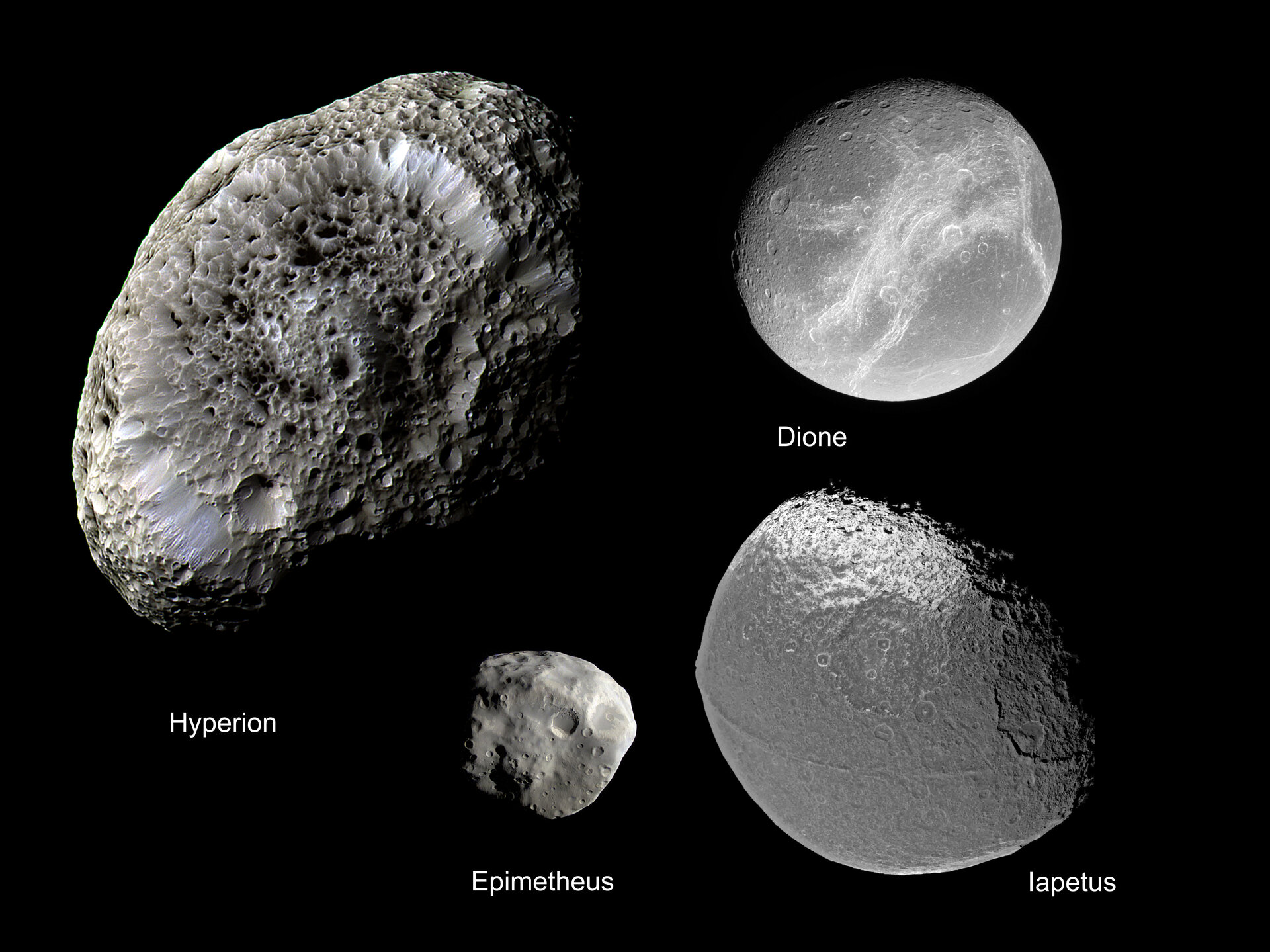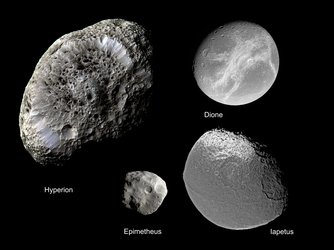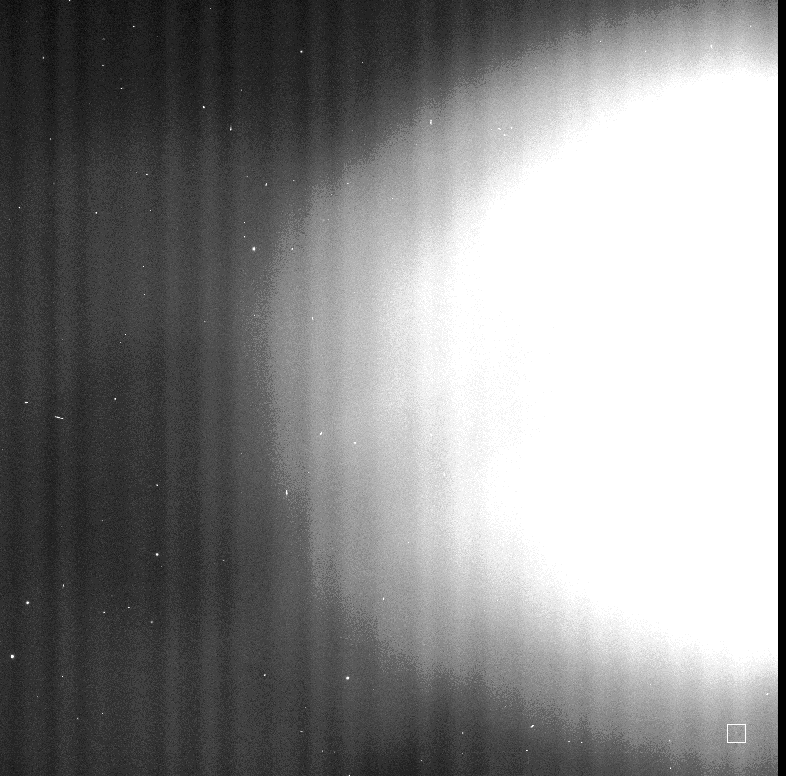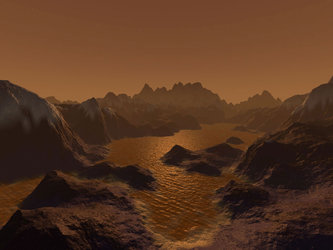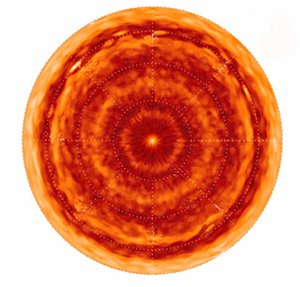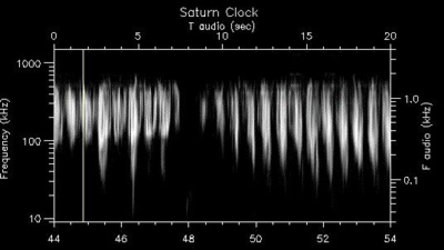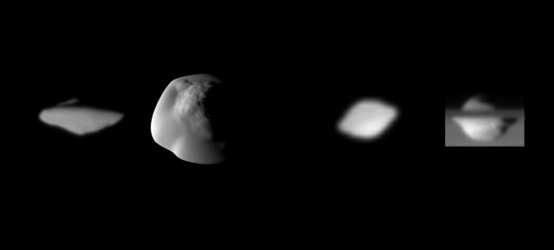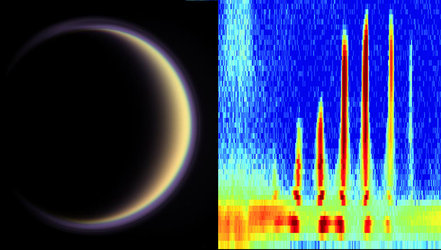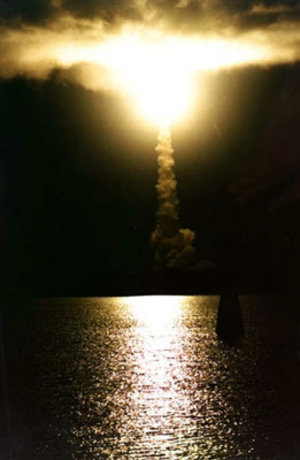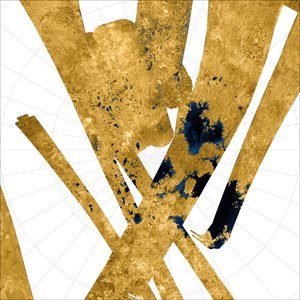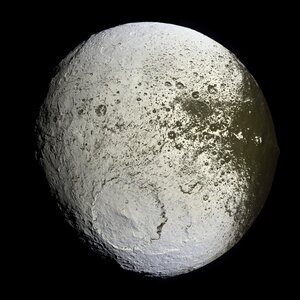Cassini finds mingling moons may share a dark past
Despite the incredible diversity of Saturn’s icy moons, theirs is a story of great interaction. Some are pock-marked, some seemingly dirty, others pristine, one spongy, one two-faced, some still spewing with activity and some seeming to be captured from the far reaches of the solar system. Yet many of them have a common thread - black ‘stuff’ coating their surfaces.
“We are beginning to unravel the mysteries of these different and strange moons,” said Rosaly Lopes, Cassini scientist at NASA’s Jet Propulsion Laboratory (JPL), USA. She coordinated a special section of 14 papers about Saturn’s icy moons that appears in the February issue of the journal Icarus.
Taken together, the papers bring an idea that Cassini scientist Bonnie Buratti calls ‘the ecology of the Saturn system’ to the forefront. “Ecology is about your entire environment – not just one body, but how they all interact,” said Buratti. “The Saturn system is really interesting, and if you look at the surfaces of the moons, they seem to be altered in ways that aren’t intrinsic to them. There seems to be some transport in this system.”
Though the details of that transport are not clear yet, mounting evidence suggests that some mechanism has spread the mysterious dark material found on several of the moons from one to another; the material may even have a common cometary origin. Along those lines, several of the new papers focus on similarities between the dark material found on different moons – on Hyperion and Iapetus, for example, or between Phoebe and Iapetus.
Roger Clark of the United States Geological Survey in Denver, USA goes further, saying, “We see the same spectral signature on all the moons that have coatings of dark material.” Clark is lead author of one of the new papers, which focuses on Saturn’s moon Dione. His team found the dark material there to be extremely fine-grained, making up only a very thin layer on the moon’s trailing side. Its distribution and composition, as measured by the Cassini visual and infrared mapping spectrometer, indicate that the dark material is not native to Dione. And scientists see many of the same signatures there that appear on the moons Phoebe, Iapetus, Hyperion and Epimetheus, and also in Saturn's F-ring.
As for where this material comes from and what the dark material is, Clark said, “It’s a mystery, which makes it intriguing. We’re still trying to find the exact match.” The visual and infrared spectrometer detected unique absorption bands in the dark material within the Saturn system, which scientists have not seen anywhere else in the Solar System. “The data keeps getting better and better,” he said. “We’re ruling things out and figuring out pieces.” So far, the team has identified bound water and, possibly, ammonia in the dark material.
Ongoing geological activity is another component of Saturn’s ecology as some of the moons continue to feed the planet’s rings, which in turn affect many of the moons.
Clark’s team reports tentative evidence to support the hypothesis presented earlier this year that Dione is still geologically active. In one series of observations, the infrared spectrometer detected a cloud of methane and water ice encircling Dione in its orbit within the outer portions of Saturn's E-ring.
Of course the big story is the icy plumes spewing from the warm, south polar region of Enceladus. These plumes are believed to be feeding the E-ring. A paper led by Frank Postberg of the Max Planck Institute for Nuclear Physics in Heidelberg, Germany, says there are traces of organic compounds or silicate materials within the water ice-dominated E-ring, close to Enceladus. This implies that the moon’s rocky core and liquid water are dynamically interacting. The finding could bolster a theory that Dennis Matson and Julie Castillo of JPL put forth this year, which said that a warm, organic brew might lie just below Enceladus’ surface.
Cassini’s next close study of an icy moon is the highly-anticipated flyby of Enceladus scheduled for 12 March. During that flyby, Cassini will pass by the active moon at a distance of only 50 km at its point of closest approach, and at a distance of around 200 km when it passes through the plumes.
To read the accompanying feature, follow this link
Notes for editors:
The Cassini-Huygens mission is a cooperative project of NASA, the ESA and the Italian Space Agency. JPL, a division of the California Institute of Technology in Pasadena, USA, manages the Cassini-Huygens mission for NASA's Science Mission Directorate, Washington. The Cassini orbiter was designed, developed and assembled at JPL. ESA developed the Huygens Titan probe, while ASI managed the development of the high-gain antenna and the other instruments of its participation.


